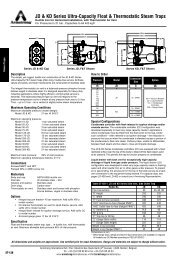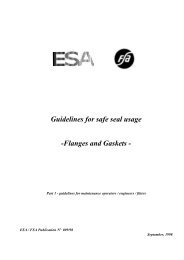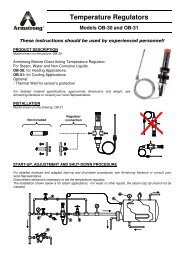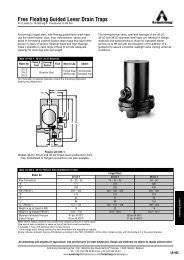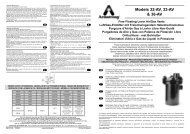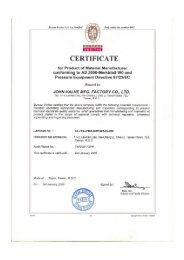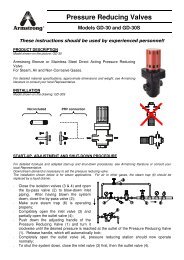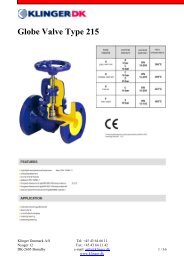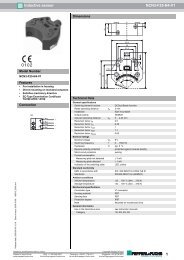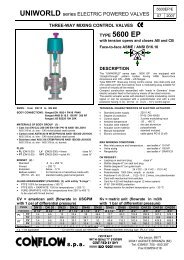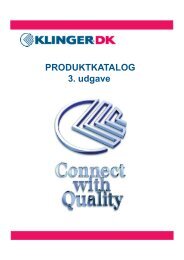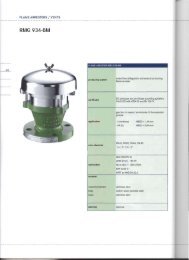assembly - Klinger Danmark A/S
assembly - Klinger Danmark A/S
assembly - Klinger Danmark A/S
You also want an ePaper? Increase the reach of your titles
YUMPU automatically turns print PDFs into web optimized ePapers that Google loves.
wT 2229/11<br />
Page 5<br />
MODE OF OPERATION<br />
During the <strong>assembly</strong> of the body and connection piece, the sealing system is elastically at the ball. The<br />
two prestressed elastic sealing elements made of stainless steel in conjunction with the sealing rings<br />
and a seal at the periphery of the outer diaphragm form a system with the ball on the ball on the inlet<br />
and outlet side of the ball valve. A back-up ring protects the elastic sealing elements against excess<br />
stress, while a wire ring acts to hold the sealing unit in place (Figure 2).<br />
Figure 2<br />
U-sleeve, O-ring<br />
Wire ring<br />
Back-up ring<br />
Sealing ring<br />
Ball<br />
As a result of the elasticity, two primary sealing points are always present of the valve opening up to a<br />
certain pressure. The differential surface areas on the sealing elements cause the pressure of the<br />
medium to press the sealing ring against the ball surface on the inlet side of the ball valve. The sealing<br />
element arranged on the side not exposed to the pressure or outlet side is lifted by the ball surface<br />
when the clearance space between the sealing ring is exposed to a pressure exceeding the nominal<br />
pressure.<br />
Figure 3<br />
Medium pressure<br />
Clearance space relief at<br />
exceeding of the nominal pressure<br />
Depressurised<br />
The ball valve may be pressurised in both directions of flow. Heat expansions are compensated by the<br />
elasticity of the sealing elements.



